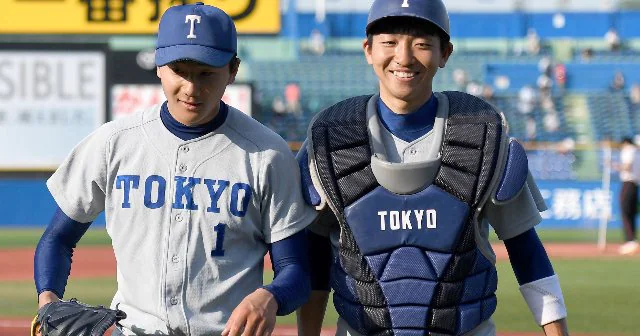What kind of first-class company does the Bunbu Ryodo elite of the University of Tokyo baseball club, which has the highest deviation value in Japan, choose? Employment ranking for the past 31 years … 2nd place is Dentsu / NHK, 1st place? –Draft Meeting –Number Web

◆◆◆
Continuing from the previous article, based on the data for the 11 years from 2012 to 2010, the following ranking was created for a total of 213 graduates.
1st place Employment (40%) 86 people
2nd place Graduate school (31%) 67 people
3rd place (24%) 51 students
In addition, professional baseball, returning to a university hospital, studying abroad, etc.
1st place Trading company (19 people) → 22% of employment
2nd place Bank (10 people) → 12%
3rd place Life and non-life insurance (9 people) → 10%
4th place Real estate (8 people) → 9%
5th place broadcast (6 people) → 7%
6th place Car, land transportation (4 people) → 5%
7th place Consulting, Information / Communication, Chemistry (3 people) → 3%
8th place Advertising, securities, retail (2 people) → 2%
9th place Shipping, electricity / gas, food, personnel dispatch, steel, publishing, general electricity, machinery, pharmaceuticals, incorporated administrative agency, public employee (1 person) → 1%
1st place Mitsubishi Corporation, Sumitomo Corporation, Mitsui Fudosan: 5 people
2nd place Mitsui & Co., Tokio Marine & Nichido Fire: 4 people
3rd place ITOCHU, Development Bank of Japan, NHK: 3 people
4th place Mizuho Bank, Mitsubishi Estate, TBS, Toyota Motor, JR East, JR Tokai, Nippon Life, BayCurrent Consulting, Nomura Securities, Fuji Film: 2 people
5th Marubeni, JFE Shoji, Sumitomo Mitsui Banking Corporation, Sumitomo Mitsui Trust Bank, Bank of Japan, Norinchukin Bank, Morgan Stanley, Mori Building, Fuji Television, Sumitomo Mitsui Marine, Insurance Japan Nipponkoa, Zebio, Mitsubishi Motors Kurashiki, Mitsubishi Automobile Okazaki, Sumitomo Life, Accenture, Nippon Dispensing, Dentsu, Macbee Planet, Obic, Nomura Research Institute, Shosen Mitsui, Toho Gas, Suntory Foods International, Recruit, APJ media, Nippon Steel, Hitachi, Asahi Kasei, Shinto Kogyo, Kyowa Fermented Kirin (currently Kyowa Kirin), International Cooperation Organization, freee, Saitama City Hall: 1 person
* Course at the time of graduation. In addition to athletes, managers (main managers) and student coaches are also included in the calculation. Sources are Sports Nippon, Sports Hochi, and the University of Tokyo Baseball Club website. In addition, although there are students from other universities as managers, they are treated here as graduates of the University of Tokyo baseball club.
A total of 18 people in 5 major trading companies “Mitsubishi Corporation is still strong”
During the 11 years from 2012 to 2010, the employment rate of general university students in the world continued to rise from the first half of 60%, and exceeded 70% in 2015. Therefore, it is also called the “seller market”, and it can be said that it is a period when it is relatively easy for students to get a job. Even in the 20th and 21st years when the corona was hit, the 70% level was kept, and the employment ice age is now a long time ago.
